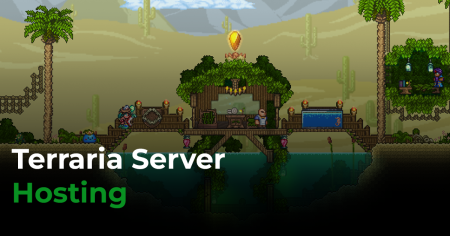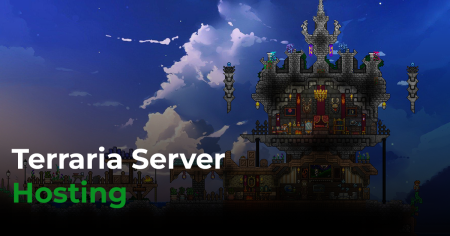Are you torn between the adventurous world of Terraria and the charming, serene farms of Stardew Valley? You’re not alone! These two popular games might seem worlds apart, but they share intriguing similarities in their core mechanics.
Whether you’re into battling fearsome foes in Terraria or nurturing your crops and social bonds in Stardew Valley, understanding the differences and similarities can elevate your gameplay experience. Let’s delve into their essential gameplay basics to help you navigate their unique landscapes and maximise your enjoyment. Get ready to explore and master your chosen path!
Comparing Basic Gameplay Mechanics: Terraria vs Stardew Valley
Terraria and Stardew Valley each invite players into rich, immersive worlds, but with distinct gameplay mechanics that set them apart. In Terraria, the journey begins by crafting a character and building a world, prioritising exploration and survival. Players are immediately thrust into a sandbox experience, where digging deep and fighting off enemies is key to progression.
In contrast, Stardew Valley starts with creating a character and selecting a farm layout. This game’s charm lies in its structured approach, focusing on farming and building relationships within the community of Pelican Town. The first week is pivotal for setting up a successful farming venture involving planting crops and meeting townsfolk.
Character progression takes centre stage in both games, albeit in different forms. Terraria emphasises combat and exploration as the primary means of growth. Players must choose a fighting build and remain consistent to enhance their effectiveness against various enemies.
The game’s progression is marked by defeating bosses and acquiring better armour and weapons. Stardew Valley, on the other hand, revolves around farming, social interactions, and skill development. Progression is achieved by levelling up skills like Farming, Mining, and Fishing, which unlock new abilities and crafting options. Building friendships and participating in seasonal events also contribute to character development.
| Feature | Terraria | Stardew Valley |
|---|---|---|
| Initial Setup | Create a character, choose a world | Create a character, choose a farm |
| Main Focus | Combat and exploration | Farming and social interactions |
| Progression | Defeating bosses, equipment upgrades | Levelling up skills, community events |
| Exploration | Biomes and underground caverns | Seasons and local events |
| Resource Gathering | Mining and crafting stations | Farming and foraging |
| Unique Feature | Journey Mode | Community Center |
Essential Starting Tips for Beginners in Terraria and Stardew Valley

Starting in Terraria and Stardew Valley can feel overwhelming, but early strategies make all the difference. In Terraria, securing your survival hinges on building a sturdy house immediately. Why build a house so soon?
It’s your haven against the relentless night-time creatures. Gather wood and other resources during the day to construct your shelter and craft essential tools. In Stardew Valley, the first week is pivotal for laying a solid foundation for your farm.
Focus on planting crops and getting to know the townsfolk. This initial setup secures future income through crop sales and opens up social opportunities that can benefit you down the road.
Avoiding common beginner mistakes is key to a smooth start in both games. In Terraria, neglecting to craft primary weapons and armour can leave you defenceless, so prioritise these as soon as possible.
Additionally, don’t forget to organise your resources; clutter can make crafting and building more of a hassle than it needs to be. In Stardew Valley, one common pitfall is overexerting your character and running out of energy, leading to lost opportunities. Always keep an eye on your energy bar and plan your activities accordingly. Also, remember that meeting the townsfolk early can lead to helpful friendships and marriage.
- Terraria Tips:
- Build your first house quickly for protection.
- Gather resources during the day.
- Craft primary weapons and armour early.
- Organise resources to streamline crafting.
- Explore caves for valuable materials.
- Stardew Valley Tips:
- Plant crops in the first week.
- Meet as many townsfolk as possible.
- Manage your energy carefully.
- Save for tool upgrades.
- Build a chest for inventory management.
Crafting Systems and Resource Gathering: A Comparative Guide
Crafting and resource gathering are the lifebloods of Terraria and Stardew Valley, each offering unique systems crucial for progression. In Terraria, crafting is a vast and intricate endeavour requiring players to collect various resources to create everything from essential tools to complex machinery. Meanwhile, in Stardew Valley, crafting is intimately linked to skill progression and tool upgrades, with resource gathering playing a pivotal role in farm expansion and productivity.
Crafting in Terraria
Terraria’s crafting system is a sandbox enthusiast’s dream, offering a variety of items to create. The process relies heavily on crafting stations, which are the backbone of item creation. Players can build basic workbenches, forges, and anvils, each unlocking new crafting recipes.
These stations allow players to transform gathered resources into essential survival tools, weapons, and armour. The key to mastering Terraria’s crafting is thoroughly exploring the world, collecting rare materials and upgrading crafting stations to unlock advanced items.
Crafting in Stardew Valley
In Stardew Valley, crafting is less about the sheer number of items and more about strategic progression. New crafting recipes become available as players level up their skills in Farming, Mining, and other areas. Tool upgrades are vital to this system, allowing players to work more efficiently and tackle larger projects. Crafting in Stardew Valley focuses on improving the farm, building infrastructure, and enhancing everyday life in Pelican Town. This approach to crafting encourages players to engage in various activities, from growing crops to fishing, to gather the necessary resources for crafting.
Resource Gathering Comparison
Resource gathering in both games is essential yet distinct. Terraria demands exploration and mining in diverse biomes to collect materials like ores, gems, and rare elements. This resource diversity supports the game’s dynamic crafting system and fuels player progression. On the other hand, Stardew Valley centres around farming and foraging, with resources like wood and stone fundamental to expansion. Players must balance farming with exploration of the mines to collect resources needed for crafting and upgrading tools, making resource management a vital component of the gameplay experience.
| Game | Key Resources | Crafting Stations |
|---|---|---|
| Terraria | Ores, wood, gems | Workbench, forge, anvil |
| Stardew Valley | Wood, stone, crops | Workbench, furnace, kitchen |
| Terraria | Rare elements, building blocks | Altar, loom, sawmill |
| Stardew Valley | Minerals, forage items | Preserves jar, mayonnaise machine |
Exploring the Worlds: Terraria’s Biomes vs Stardew Valley’s Seasons

Exploration in Terraria and Stardew Valley is more than just wandering around; it’s a pivotal aspect that fuels progression and enriches the gameplay experience. In Terraria, exploration is a means to survive and thrive as players delve into various biomes, each teeming with unique enemies and resources. Discovering these biomes is crucial for gathering the materials necessary for crafting and advancement. In Stardew Valley, exploration aligns with the changing seasons, each offering distinct crops and events. The seasonal cycle influences farming strategies, social interactions, and resource availability, making adapting and planning for each season’s offerings essential.
Terraria’s biomes are the heart of its exploration. They present various environments, each with its own challenges and rewards. Players must navigate these landscapes, from the peaceful Forest to the perilous Corruption, to find rare resources and defeat formidable foes.
Each biome holds unique treasures and monsters, requiring players to equip themselves appropriately to survive. Mastering the art of exploration in Terraria involves understanding each biome’s threats and opportunities, allowing players to progress by crafting better gear and defeating powerful bosses.
Stardew Valley’s exploration revolves around the rhythm of the seasons.
Each of the four seasons brings new crops to plant, events to participate in, and weather patterns to contend with. Spring kicks off the farming year with fresh opportunities, while Summer heats things up with a rich bounty of crops. Autumn provides a final harvest opportunity before Winter sets in, offering a chance to focus on mining and indoor activities. Understanding and leveraging seasonal changes is key to maximising farm productivity and fostering relationships in Pelican Town.
- Terraria Exploration Tips:
- Equip yourself with appropriate gear for each biome.
- Explore caves for hidden treasures and resources.
- Use grappling hooks for better mobility.
- Craft torches to light your path and avoid surprises.
- Regularly return to base to organise and store findings.
- Stardew Valley Exploration Tips:
- Check the calendar for seasonal events.
- Plan crop planting around the season’s weather.
- Visit the mines during Winter to offset farming downtime.
- Engage with townsfolk during festivals to build relationships.
- Keep an eye on the weather forecast to optimise farm activities.
Combat and Survival Strategies in Terraria and Stardew Valley
In Terraria, combat is a core aspect of gameplay, requiring players to choose and stick with a fighting build to maximise their effectiveness. What’s a fighting build, you ask? It’s essentially your combat style, ranging from melee, ranged, or magic. Picking a style early and committing to it allows you to specialise your skills and gear. Acquiring strong armour and weapons as soon as possible is crucial for survival, as the world is teeming with hostile creatures.
Meanwhile, in Stardew Valley, combat is more of a side activity, primarily encountered in the mines. Here, players need to fend off creatures to gather valuable resources. The importance of combat in Stardew Valley lies not in its frequency but in the rewards it offers, which can significantly aid in farm development.
Survival strategies in both games hinge on practical resource and energy management. In Terraria, players must gather resources diligently, always keeping an eye on their inventory to ensure they have the necessary items for crafting and survival. Exploring caves and biomes is essential for finding materials to upgrade gear and build protective structures.
In Stardew Valley, survival is more about managing your energy levels effectively. Overexerting your character can lead to missed opportunities, so planning tasks carefully and monitoring energy levels is key. Both games reward strategic planning, whether managing resources or balancing energy use, to ensure players can progress smoothly through the game.
- Terraria Combat and Survival Strategies:
- Choose a fighting build and stick to it.
- Acquire strong armour and weapons early.
- Explore biomes for unique resources.
- Craft potions to boost health and abilities.
- Build safe shelters to weather enemy attacks.
- Stardew Valley Combat and Survival Strategies:
- Prioritise energy management to avoid exhaustion.
- Upgrade weapons to tackle mine creatures efficiently.
- Focus on resource gathering during downtime.
- Use forage items for energy boosts.
- Build friendships to unlock helpful perks and recipes.
Final Words
Diving into the captivating worlds of Terraria and Stardew Valley can be an exciting adventure. Each game offers unique challenges and experiences, from exploring distinct biomes in Terraria to navigating the ever-changing seasons of Stardew Valley. Both games cater to different gaming styles.
While Terraria focuses on combat and exploration, Stardew Valley shines in farming and social interactions.
By understanding and mastering these fundamental mechanics, you can enhance your Terraria gameplay or find your stride with Stardew Valley’s beginner guide. Embrace the journey, make it your own, and enjoy every thrilling moment. Happy gaming!
FAQ
Which game is better, Stardew Valley or Terraria?
Choosing between Stardew Valley and Terraria depends on what you’re after! Stardew Valley offers a peaceful farming and social experience, while Terraria explores adventure and combat. Both are equally absorbing in their way.
Are Terraria and Stardew Valley connected?
Terraria and Stardew Valley are not directly connected. Although they share similarities in style and some gameplay elements, like exploration, each game provides a unique experience and narrative.
What is the best beginner stuff in Terraria?
Wooden armour and tools are the best beginner items in Terraria. Building a simple shelter quickly helps ensure survival against early threats like zombies and slimes.
What should I do early in Stardew Valley?
Early in Stardew Valley, focus on planting crops, meeting townsfolk, and collecting resources. These actions set the stage for a successful farming journey and town integration.
What are some essential tips for beginners in Terraria and Stardew Valley?
For beginners, it’s critical to prioritise shelter and resource gathering in Terraria and planting and socialising in Stardew Valley. Both require strategic planning to avoid common beginner pitfalls.
How do crafting systems differ between Terraria and Stardew Valley?
In Terraria, crafting involves using various stations to create items crucial for survival and progression. Meanwhile, Stardew Valley ties crafting to skill progression, with tools evolving through upgrades.
What should be explored first, Terraria’s biomes or Stardew Valley’s seasons?
Explore Terraria’s biomes for valuable resources and challenges. In Stardew Valley, seasonal activities like planting and events should guide your exploration to maximise benefits and experiences.













